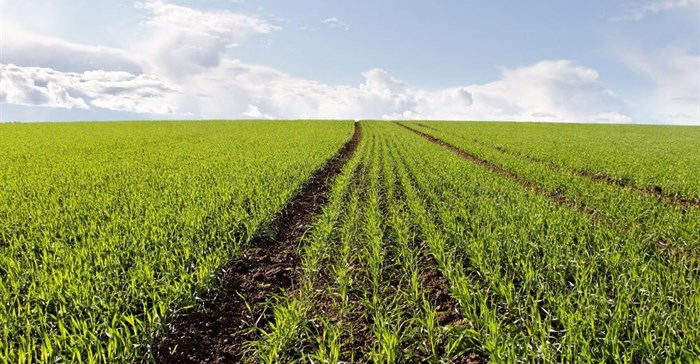
Subscribe & Follow
Advertise your job vacancies
Farmers hold the key to nature conservation: let's treat them that way
The town of Bethlehem in the Free State Province, South Africa, gets its name from the Hebrew words "Beit lechem" - house of bread. It is a fitting name for a town nestled within a patchwork of privately-owned commercial farmland. Much can be learnt here about the challenges farmers face when conserving nature.
Although renowned for producing wheat, Bethlehem is also an important habitat for hundreds of bird species, some of which are threatened by extinction. Bird watchers have spotted 257 different species in a 9km by 9km area just south of the town. This is only eight species fewer than on the entire island of Madagascar.
BirdLife International even recognises the region as the Rooiberge-Riemland Important Bird and Biodiversity Area.
Exposing nature to agriculture
This small corner of Africa typifies what is happening worldwide. Agriculture is the single largest user of land globally, with cultivated land and permanent pasture already covering 38% of the ice-free parts of our planet. In South Africa, farmers are responsible for 80% of the total surface area, of which 11% has arable potential and the rest is used for grazing.
As these percentages increase, so too will the number of species living in or around agricultural landscapes. To have any chance of coaxing these species back from the brink of extinction we must reconcile the pressures of food production with the need for nature conservation.
What are the options?
Farmers can potentially reduce their impact on nature by using wildlife-friendly farming methods. Such methods attempt to maintain natural habitat across the cultivated landscape, plant a variety of crops in smaller patches and minimise the use of chemical pesticides and fertilisers. This strategy is known as land-sharing because it assumes that agriculture and conservation share the land for their separate purposes.
The downside of land-sharing is that it tends to reduce agricultural yields per unit area. To compensate for such reductions, farmers need to increase the area under cultivation to meet the demand for food. Thus, land-sharing generally exposes more species to agricultural activities.
A second strategy
Farmers can increase their yield per unit area by producing monocultures on larger individual fields and liberally applying pesticides and fertilisers. In doing so, they can produce more food while maintaining, or even reducing, the area under cultivation. This limits the number of species exposed to agricultural impacts. This strategy is called land-sparing because it aims to prevent conversion of natural habitat by increasing yields on existing farmland.
A delicate trade-off
Land-sparing and land-sharing are two extremes of a continuum, so it is possible to use a mixture of both approaches. For instance, large monoculture fields (a feature of land-sparing), can be separated by corridors of natural grassland (a feature of land-sharing).
The contrast between land-sparing and land-sharing creates an easy-to-understand starting point for discussing the trade-off between food production and nature conservation.
Are we getting it right?
Unfortunately, if we consider a recent policy proposal, South Africa seems to be ignoring these potential trade-offs. The draft Preservation and Development of Agricultural Land Framework Bill effectively commits farmers to the land-sparing approach.
Even though the draft bill states that sustainable agriculture must complement ecological and biodiversity conservation, it also promises to entangle farmers in new regulations.
Sending the wrong message
To illustrate the suffocating nature of these proposed regulations, imagine a farm near Bethlehem that happens to be a breeding site for the endangered grey crowned crane. This bird regularly forages in agricultural land. The bill does not provide farmers with the correct incentives to conserve these birds. Agriculturally there is no benefit for them.
Section 7 of the draft bill states that farmers will have to apply, at their own expense, to use high potential cropping land for conservation. Such an application requires an agro-ecosystem report compiled by a registered agricultural specialist.
Moreover, according to section 54(3) of the draft bill, if farmers ignore these regulations and fail to use the land "for active agricultural production on a continuous basis over a period of at least 3 years" they risk having their land expropriated "at a lower price than would be paid for similar land in the same geographical area which is used optimally".
No farmer would risk their livelihood in this scenario for the sake of conservation.
Such policies ultimately consign species, like the grey crowned crane, to formally-protected areas. This is particularly concerning for the Rooiberge-Riemland Important Bird and Biodiversity Area near Bethlehem - and for other areas like it - which relies completely on conservation in agricultural landscapes.
Whether the bill will be accepted by parliament remains to be seen. Nevertheless, the situation in Bethlehem illustrates the important role agriculture plays in conserving nature. By ignoring this role, we risk creating one-sided policies that jeopardise our constitutional right to prevent ecological degradation and promote conservation.![]()
Source: The Conversation Africa

The Conversation Africa is an independent source of news and views from the academic and research community. Its aim is to promote better understanding of current affairs and complex issues, and allow for a better quality of public discourse and conversation.
Go to: https://theconversation.com/africa







